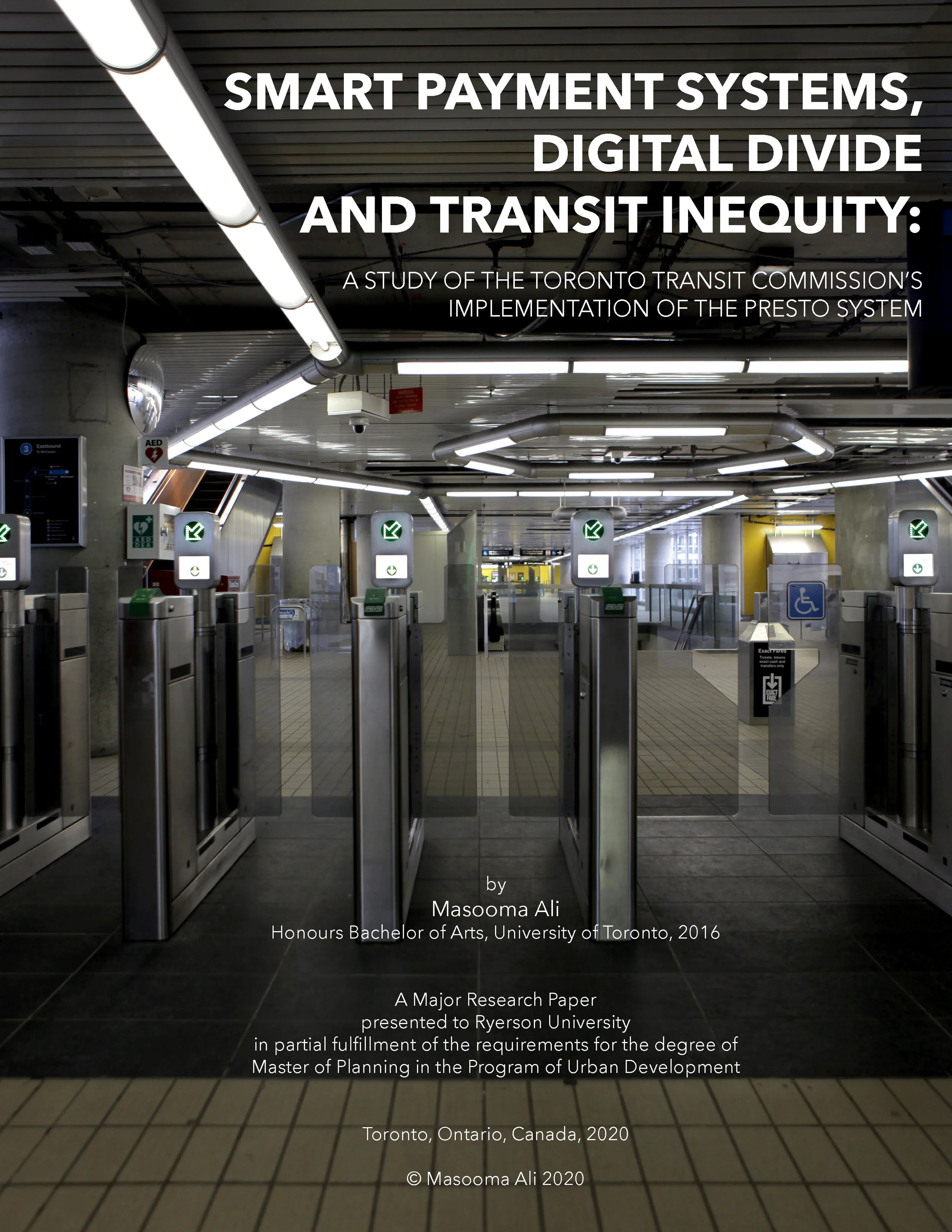Smart Payment Systems, Digital Divide and Transit Inequity: A Study of the Toronto Transit Commission’s Implementation of the PRESTO System
According to the United Nations over two thirds of the global population will live in cities by the year 2050 (United Nations Department of Economic and Social Affairs, 2018). In order to accommodate this growth efficiently, many cities are adopting ‘smart city’ practices by collecting and using data to find more efficient methods for the management of services, assets and resources. With a global move towards ‘smart’ technologies, data has become a new currency.
Contactless smart card automated fare collection systems are becoming increasingly popular in major cities around the world. The reasoning for this is twofold; firstly, smart transit cards modernize the transit experience and allow seamless payment across multiple systems. Secondly, smart technologies provide comprehensive ridership and travel data that can be used to allocate resources and serve riders better. In Ontario, PRESTO has been implemented onto 11 transit authorities including Brampton Transit, Burlington Transit, Durham Region Transit (DRT), Hamilton Street Railway (HSR), MiWay, Oakville Transit, York Region Transit (YRT) and OC Transpo in Ottawa. In the Toronto context, PRESTO is now the primary method of payment for the Toronto Transit Commission (TTC) and Metrolinx’s own, GO Transit and UP Express. However, what happens when those who do not have a bank account, credit or contactless cards, cell phones, computers or internet access need to take transit? What about those that may be homeless or rely on fare subsidy programs? What happens to those who do not have technical or digital literacy? Do these populations get left behind? The move away from tokens, tickets and passes and towards smart technology that hopes to further connect its users may be excluding a large population of Toronto residents who lack resources, face limited connectivity and rely on traditional methods of fare payment. This paper aims to explore how this change is furthering existing transit inequity in Toronto, specifically in transit deficit areas and what effects this has on the larger planning issues related to the city.
This paper begins by briefly explaining smart card technology and reviewing the history of PRESTO in Ontario and Toronto. Then relevant existing literature on transit improvement through technology, digital divide and transit equity is reviewed. This is followed by a thorough investigation and analysis of the PRESTO system and infrastructure on the TTC. Further analysis looks at the impact unreliable technology, the new station structure, transfer inequity, data privacy and surveillance and the upcoming open payment system create for TTC customers, with a specific focus on those that face barriers to access. Recommendations are presented in the form of tech, design and policy changes with a specific focus on the implications this research has on the professional practice of planning.
Key words: smart cards, transit fare payment, PRESTO, TTC, Toronto, transit equity, digital divide, digital literacy


